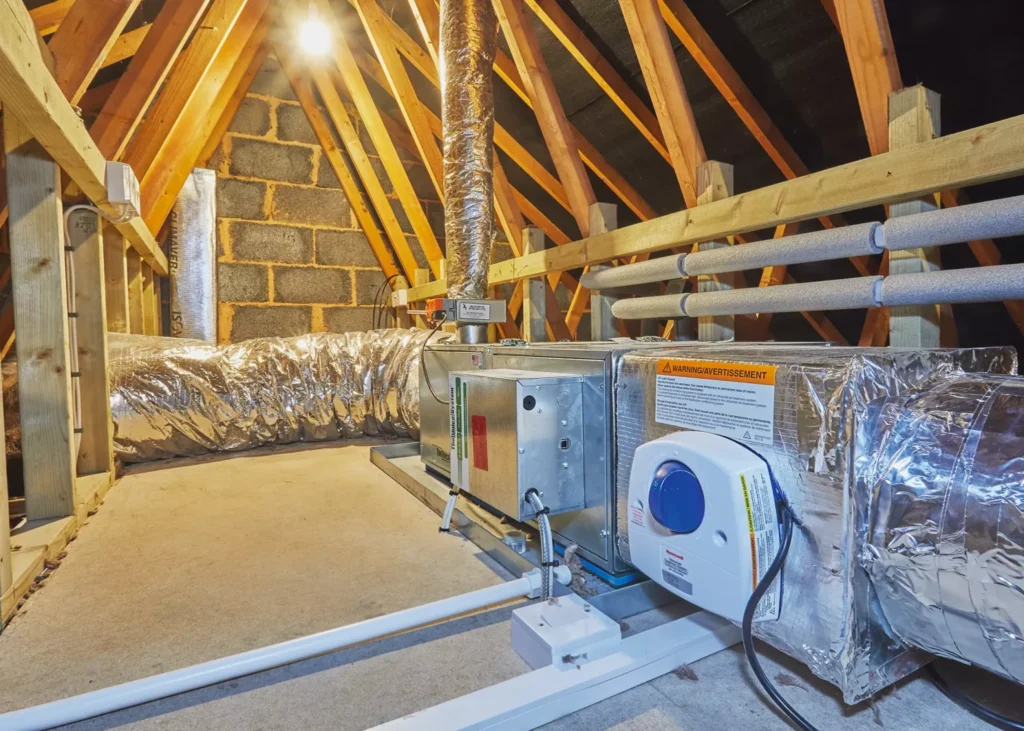Ensuring optimal indoor air quality is vital for a healthy living environment. In this guide, we’ll delve into the advantages of mechanical ventilation systems, focusing on HRV and ERV, particularly for small houses. In compact homes, an HRV unit, strategically placed on a single wall, can efficiently ventilate the entire space, benefiting from natural airflow as doors open and close between rooms. Learn how HRV ventilation systems enhance air quality and comfort in small living spaces.
Proper ventilation is essential for maintaining natural indoor air and preventing issues, like mold and stale odors. While natural ventilation has its merits, mechanical ventilation systems like HRV and ERV offer more control and efficiency.
Heat Recovery Ventilators (HRV) operate on the principle of extracting stale indoor air and recovering heat before introducing fresh outdoor air. This process not only maintains air quality but also conserves energy, making it ideal for colder climates.
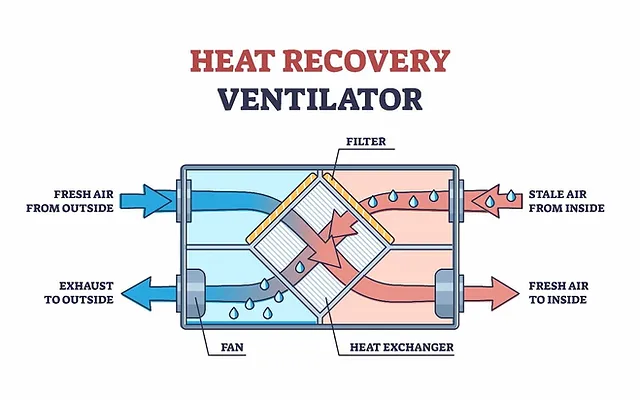
Energy Recovery Ventilators (ERV) take ventilation a step further by not only recovering heat but also managing moisture. This makes ERV systems suitable for various climates, striking a balance between energy efficiency and humidity control.
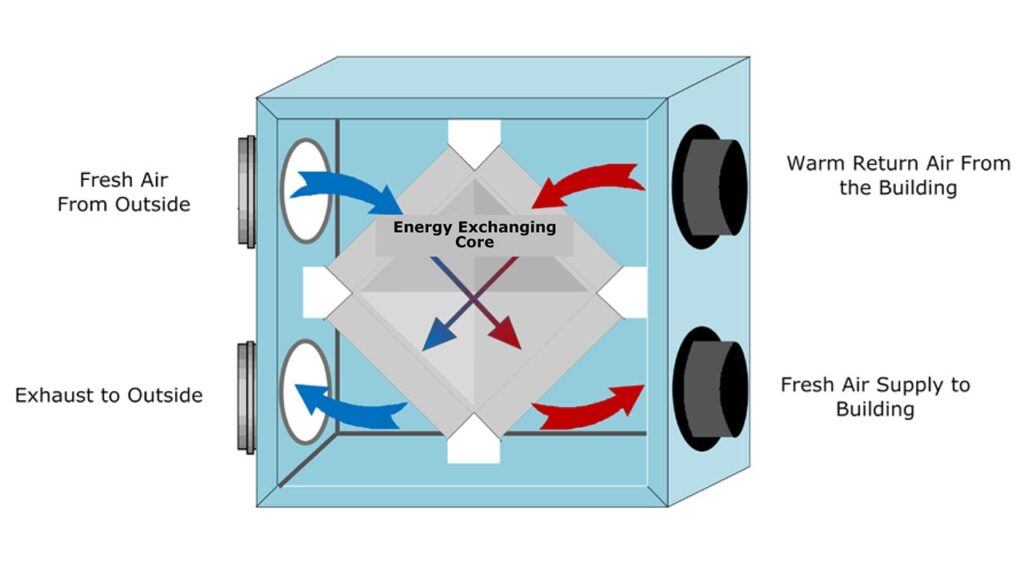
Advantages of HRV and ERV: Both HRV and ERV systems offer shared benefits:
- Improved indoor air quality
- Energy cost savings
- Enhanced overall comfort Highlight specific advantages, such as HRV’s focus on heat recovery and ERV’s inclusion of moisture control.
Choosing the right size of an HRV or ERV for a small house is crucial for optimal performance.
The size of the ventilation system is typically measured in cubic feet per minute (CFM), and selecting an appropriately sized unit ensures that your small house receives adequate fresh air exchange without wasting energy. Here are some steps to guide you:
1. Calculate Ventilation Requirements:
- Determine the volume of air in your small house by multiplying the length, width, and height of the living space.
- Refer to local building codes or standards to find the recommended air exchange rate per hour. Common rates range from 0.35 to 1 air change per hour, depending on factors such as house size and occupancy.
2. Determine Required CFM:
- Calculate the required CFM by multiplying the volume of air in the house by the desired air change rate per hour.
- CFM = Volume of the house (in cubic feet) × Air changes per hour (ACH)
- The volume of the house can be calculated by multiplying the length, width, and height of each floor.
- Air changes per hour (ACH) depend on factors like the number of occupants, indoor air quality goals, and local building codes. Common ACH rates range from 0.35 to 1.5.
3. Consider Occupancy and Activities:
- If your small house is frequently occupied or has activities that generate pollutants (cooking, use of household products), you may need a higher CFM to ensure effective ventilation.
4. Adjust for Climate:
- Consider the local climate. In colder climates, you might prioritize HRV systems with higher heat recovery efficiency. In warmer climates, ERV systems might be more suitable for managing both heat and moisture.
Our Top Picks for Small House Worthy HRVs & ERVs
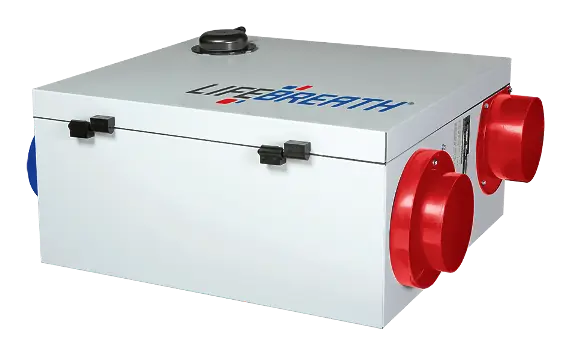
Lifebreath METRO 120D (HRV)
The Lifebreath Metro 120D HRV is specifically designed for residential applications, providing efficient ventilation for homes of various sizes. Its high-efficiency core design ensures optimal heat recovery, particularly beneficial in colder climates. Additionally, its energy-efficient operation makes it a cost-effective solution for homeowners seeking reliable ventilation. HRV ventilation systems like the Lifebreath Metro 120D are essential for maintaining indoor air quality and comfort, especially in modern homes.
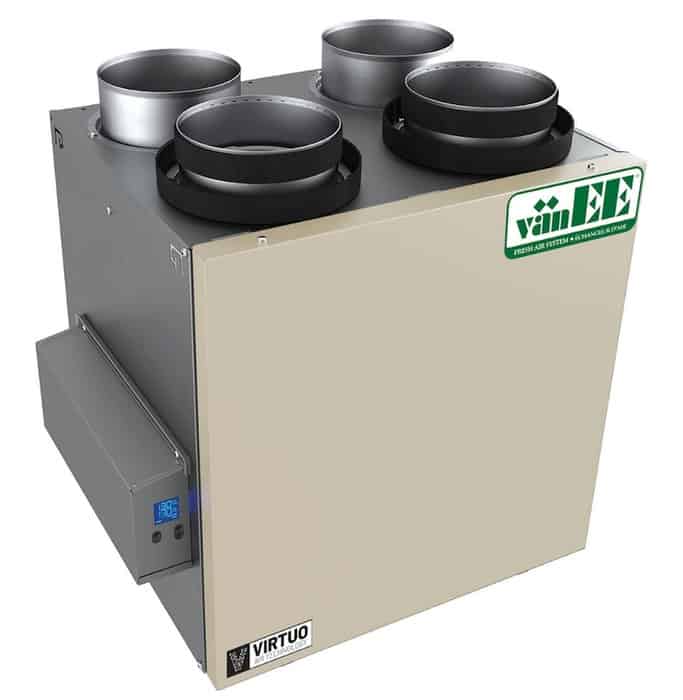
VanEE AI Series V150E75NT (ERV)
The VanEE AI Series V150E75NT (ERV) is a versatile ventilation solution ideal for small houses. With a maximum airflow of up to 136 CFM at 0.2 in.w.g and a Sensible Recovery Efficiency of up to 75% even at 0°C, it ensures efficient ventilation regardless of outdoor conditions. Its 5-inch ports and flexible top and side port options allow for easy installation, adapting to various home configurations. HRV ventilation systems like the V150E75NT are essential for maintaining optimal indoor air quality and comfort in smaller living spaces.
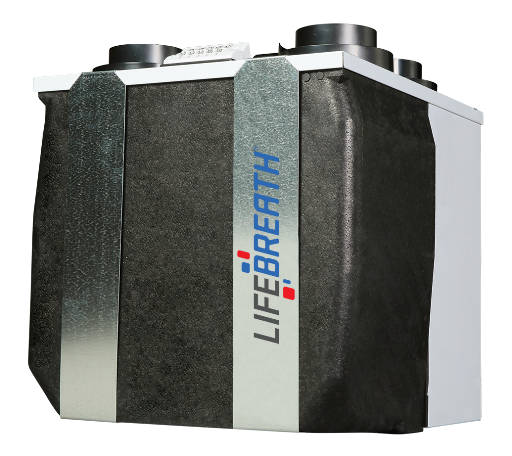
Lifebreath RNC4-TPF (HRV)
The Lifebreath RNC Series RNC4-TPF HRV is engineered for outstanding ventilation performance. With its Cross Flow Core, adjustable dampers, and top-ported compact design, it ensures optimal air exchange and precise control. This HRV model is ENERGY STAR® certified, meeting rigorous energy efficiency standards set by Natural Resources Canada and the US EPA, resulting in reduced energy consumption. Additionally, it comes with a lifetime warranty on the HRV core and a 5-year replacement parts warranty, providing long-term reliability and peace of mind for homeowners. HRV ventilation systems like the RNC4-TPF are essential for maintaining superior indoor air quality and comfort in residential settings.

